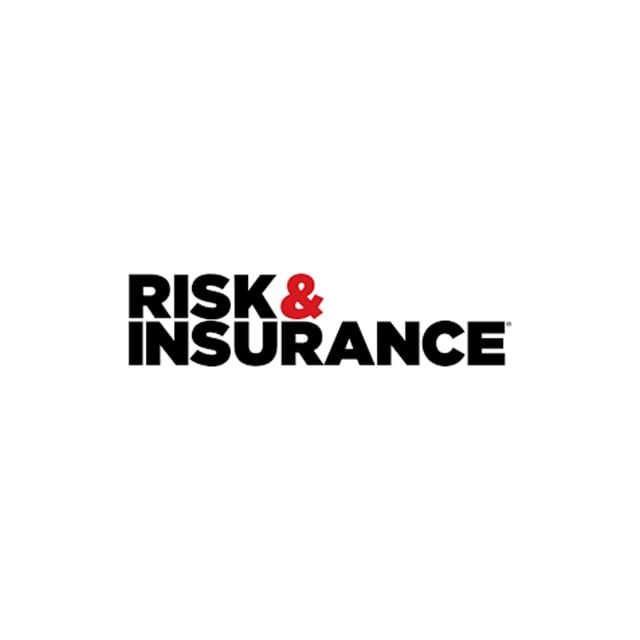How Changing CAT Patterns Impact Claims Operations
This post is the final installment in a series focused on the insurance implications of the evolving CAT landscape. Check out the prior posts in this series at the links below.
- An Actuarial Analysis of the Changing CAT Risk Landscape
- Five Data-Driven Approaches to Boost Underwriting Proficiency in an Evolving CAT Environment
by Valerie Peterson, with contributions from Mark Funk
If you have been in claims for any amount of time, you are aware that things are changing. From wildfires to hurricanes, and with hail and tornados in between, the frequency, location, timing, and severity of catastrophic events are changing across the globe.
Wildfires
Looking closely at wildfires – there is a clear trend toward increasing frequency and scale of these events, while the former wildfire “season” is simultaneously expanding to be an almost year-round phenomenon. This trend is not isolated to just the United States, either. Australia and continental Europe are each experiencing significant increases in wildfire impact over the past decade, and the European Environment Agency predicts that a 3-degree C increase in temperatures on the continent could contribute to a doubling of burnt area in EUMED5 countries.
Within the United States, California has been largely associated with being on the “front lines” of these devastating events. There was a time when large wildfires in suburban areas occurred once or twice a decade. Over time they became an annual occurrence and had a clear “season” of exposure. Recently, we are seeing the season stretch to longer timeframes throughout the year, and these dramatic events are expanding to geographic areas not previously considered to be targets – Oregon, Washington, and Colorado have recently shared the sad legacy of wildfire destruction.
The factors driving these changes are complex, with many individual factors occurring simultaneously that amplify the event patterns. An increase of development in previously open spaces, often in areas with a history of wildfires or flood events, compounds this issue by establishing new assets to be damaged by more frequent CAT events in historically prone areas, often adjacent to remaining forested areas.
Weather changes exacerbate this issue. Long-term drought conditions in the west are contributing to the frequency and intensity of wildfire events and establishing a cycle where even the occasional “wet” year contributes to the problem by fostering rapid vegetation growth. When this rapid growth is followed by long stretches of lower-than-normal precipitation, that new vegetation dries and presents an additional risk for wildfire fuel. Temperatures are also consistently warmer than they have been in prior decades, further drying the landscapes prone to wildfires.
Hurricanes and Tornadoes
Rising temperatures are not just an issue for wildfires. Warmer temperatures also result in warmer water, which contributes to bigger and stronger tropical storms and hurricanes. Similar to wildfires, the location, frequency, and intensity of nearly every category of hurricane and tropical storm are also changing. While there are dramatic ebbs and flows for tropical cyclones and hurricanes from year to year, NOAA utilized its full alphabet of storm names in both 2020 and 2021. According to the NOAA, 2021 was the sixth consecutive year of above-normal tropical storm and hurricane activity in the Atlantic Ocean, and the 19th above-normal season in the past 27 years.
While hurricane destruction is not new, the recent phenomenon of storms “sitting” over areas and inundating them with rainfall and creating additional exposure to floods is new. Additionally, the traditional “Tornado Alley” area including parts of Texas, Louisiana, Oklahoma, Kansas, South Dakota, Iowa, and Nebraska has shifted eastward toward the Mississippi River Valley, defining a new “Dixie Alley” which stretches from Texas and Arkansas through Louisiana, Mississippi, Tennessee, Alabama, Georgia, western Kentucky and parts of North and South Carolina. The two combined tornado alleys now include 15 U.S. states.
Insurance Industry Impact
The dramatic nature of CAT events creates pressures that impact the response from insurance organizations. One of the issues that the entire industry grapples with is the resource vacuum following events of magnitude. The free-market system does a good job establishing an equilibrium in the supply vs demand equation under normal circumstances, but large CAT events create a sudden and dramatic spike in demand for resources of all types that the market – from available housing, building materials, and skilled tradesmen to government resources like building inspectors. Skilled, experienced insurance claim professionals are no exception. These market pressures can combine to create situations where costs rise while quality and timeliness simultaneously degrade. These challenges impact every insurance organization but have a disproportionate impact on smaller carriers as larger insurers typically have the scale to better absorb spikes in volume and to secure resource commitments from partner vendors. This can further exacerbate the resource vacuum for mid-sized and smaller carriers.
It is the honor and simultaneous misfortune that claim operations inherently step in to aid in recovery after catastrophic events. The challenge is that claims operations don’t become involved until after an event has occurred, and the claim function has no control in preventing an event. The good news is that multiple strategies can be applied in the claim realm to assist in controlling the course, cost, and duration of catastrophes.
The Impact of Technology
The application of technology has the potential to level the playing field for insurers of all sizes, improving the vacuum of claim professional resources and the cost of catastrophe response operations substantially. Technology falls into several categories, each of which has the potential to lessen the manual on-site work that is needed to document, assess, and adjust catastrophic claims.
Artificial intelligence, data modeling, and rule-based audit systems can be employed to identify risks with likely damage and generate a loss exposure estimate based on the risk and the variables in the area. While settling claims based solely on this technology poses some risks, these types of analyses can provide a substantial amount of initial evaluation, reducing the amount of manual effort required. Leveraging these technological solutions can reduce the time needed to complete a review inspection and provide an initial audit of the estimate prior to manual review to ensure the accuracy of the evaluation.
Drone inspections and virtual appraisals both provide valuable time savings and safety benefits in evaluating damaged properties. These alternate inspection strategies involve several advanced technologies and allow for partnerships with vendors to complete inspections that may otherwise be delayed due to a lack of qualified adjusters in the area or unsafe site conditions. Mobile inspections allow partner vendors to document the damage present on-site, allowing the loss to be estimated and the claim advanced without waiting for an adjuster to physically enter or inspect the property. The estimate can then be written by the vendor or a qualified estimator which retains the technical accuracy of the evaluation while limiting the expense of the investigation as well as costly time delays.
Satellite imagery has become a critical tool in catastrophe response, allowing timely “access” to devastated areas without putting human lives in harm’s way, or interfering with first responders in the area. Large wildfire losses often result in the affected area being closed to civilian inspection for days or weeks. Satellite images from before and after the CAT event allow for confirmation of the properties impacted by the fire and facilitate a quick response by the carrier in releasing policy benefits. Similarly, satellite imagery can aid in the remote assessment of impacted properties from tornadoes, hurricanes, and floods by providing prompt confirmation of impact from the event and mobilization of resources by carriers to those in need.
Technology can play a part in avoiding losses as well, sparing the insured from the trauma and inconvenience of a significant, widespread loss. Proactive notifications to insureds in the path of a storm can provide valuable advance notice, allowing insurers time to prepare and take mitigating steps to prevent or lessen the extent of a loss. Notification to property owners in the area of a forecasted freeze could enable insureds to adjust thermostats, insulate pipes, or simply open a faucet to keep water flowing and prevent a burst pipe. Notification of storms with accumulations that could result in flooding provides homeowners with the opportunity to take mitigating steps such as boarding up openings, placing sandbags, and moving personal property to higher elevations.
Technological advances can go a long way in serving the needs of both insureds and carriers in catastrophic responses, but no technology is a silver bullet. The human element is critical in times of loss, and experienced, empathetic claims professionals will always be vital to a carrier’s on-site response. For this reason, there is a benefit for small and mid-sized carriers to aggregate their claims response, allowing for greater market availability as spikes in demand occur. While select large carriers have the scale to secure contingency resources on a priority basis, the result can be a resource vacuum for other small to mid-size carriers. Contracted Claim Departments, like the one at Xceedance, can level the playing field and leverage their collective size to secure resources and pricing in advance of events. While competition is a real thing in the insurance marketplace, at the time of the claim we are not competing for each other’s losses. Working together serves all parties – the stakeholders, the insureds, and the carriers – and is the better path forward as CAT risks continue to evolve.
Valerie Peterson is AVP, U.S. property claims at Xceedance. Contributor Mark Funk is AVP, quality assurance/subrogation at Xceedance. Either can be reached by email at [email protected].


